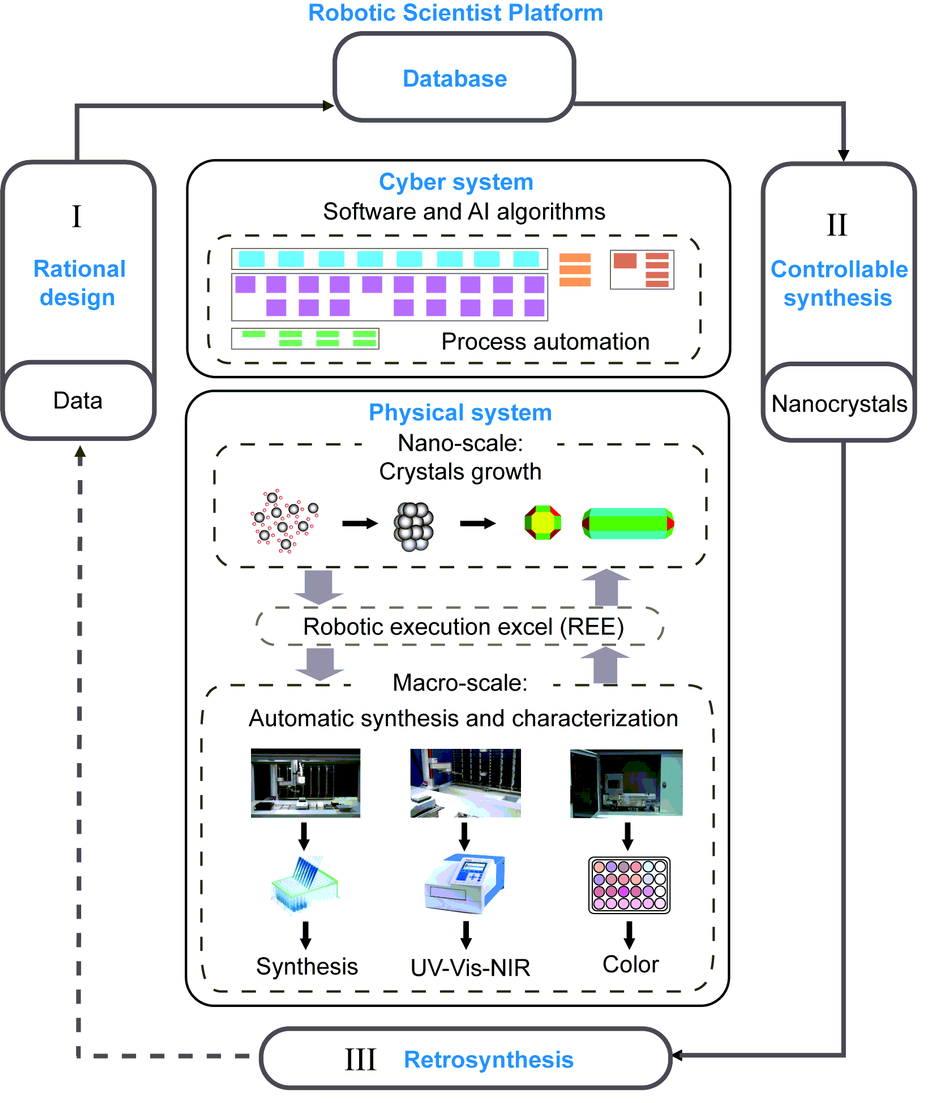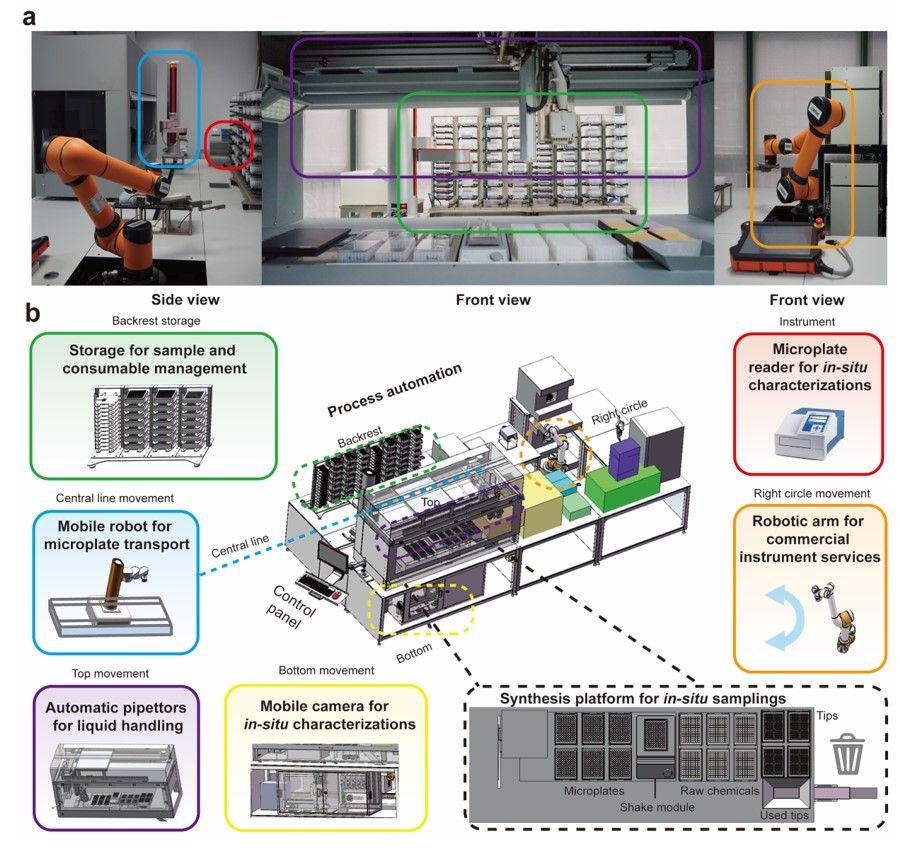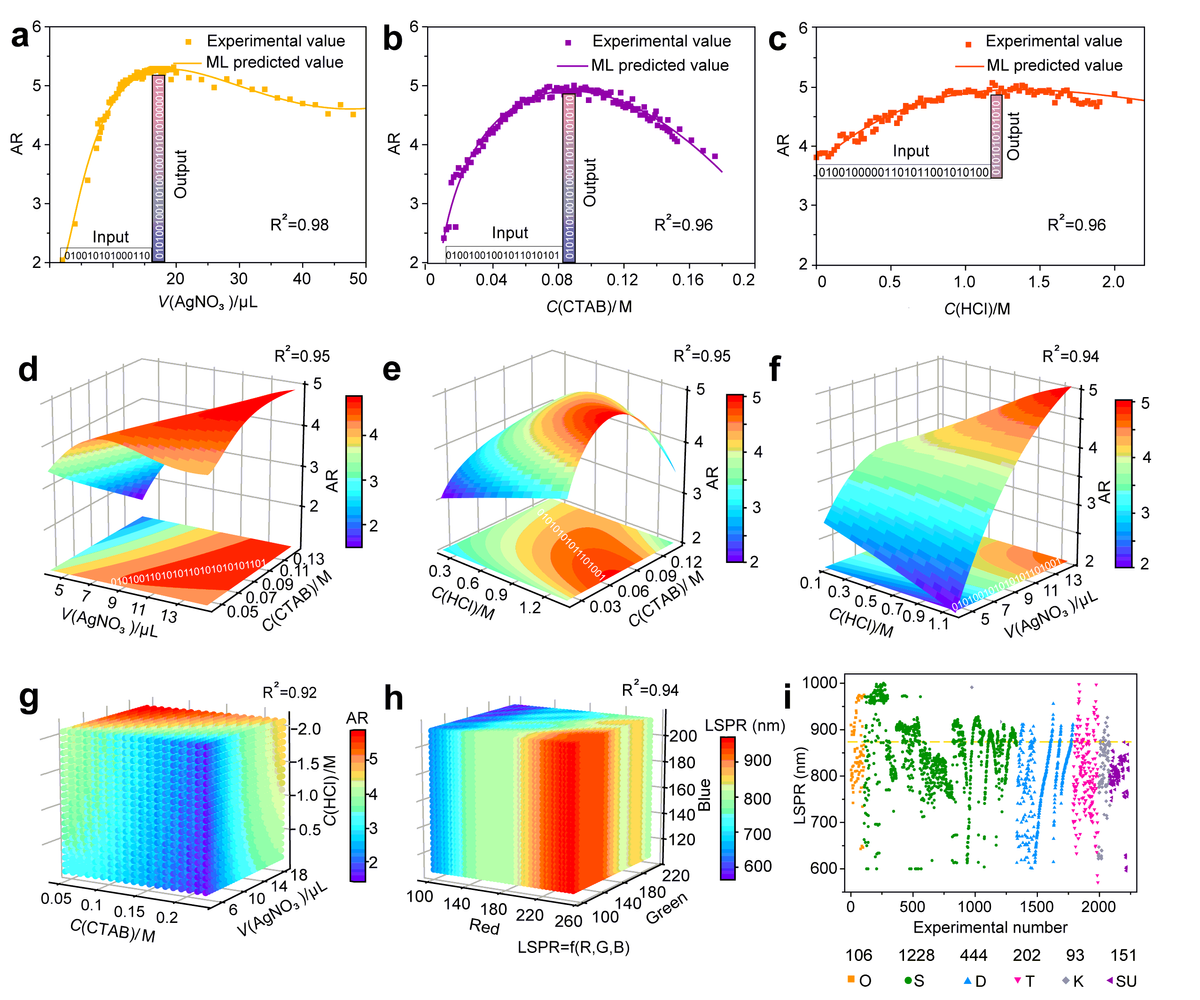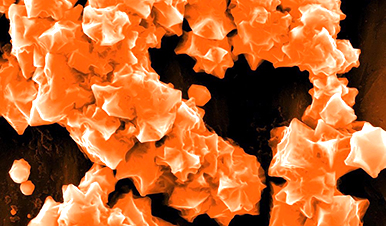Fabrication of materials using data-based techniques is being welcomed as a new strategy that will replace human scientists’ hit and miss tests and labor demanding jobs. In an article published to the chemRxiv* preprint server, a Robotic Scientist framework that may provide unparalleled capabilities for logical design, retrosynthesis, and programmable fabrication of nanoparticles is discussed.
The Robotic Scientist framework is taught to fabricate gold nanocrystals by using multidisciplinary domains such as artificial intelligence, automated robotics, and big data.
Data-Driven Fabrication of Materials
Data-guided development of materials is being hailed as a new paradigm for shifting laborious activities and trial-and-error tests away from human researchers and towards robotic scientists or chemical fabrication mechanized systems.
The sophisticated Human-AI-Robot cooperation system is expediting the multidisciplinary breakthrough in the fabrication of materials towards a Robotic Scientist for mechanized creation.
Convergence of chemical research, theoretical modeling, purpose-driven databases, configurable cyber networks, and mechanized physical systems is required in this growing discipline.
One of the potential objectives is digitized material generation, which involves gradually collecting information, efficiently revealing data links, and producing viable solutions over time based on prior iterations.

Figure 1. Robotic Scientist platform. Convergence of the database, cyber system, and physical system and process flow: I. Rational design, II. Controllable synthesis, and III. Retrosynthesis for closed-loop synthesis of nanocrystals based on the Robotic Scientist platform. © Zhao, H., Chen, W., et al. (2022)
Existing Work on Automated Fabrication Processes
Significant endeavors have been undertaken in the last decade to achieve digital production of substances.
On the macro-scale, layer-by-layer computerized additive production of 3D substances has been established. Artificial biology is a micro-scale milestone for the computerized fabrication of biomaterials using cells as the hardware on which genes are programmed
Lately, there has been considerable growth in biological programming languages and autonomous systems for chemical synthesis on a small scale. Simultaneously, a computerized chemist has been reported in order to find photocatalysts, opening the door to automated synthetic material research on the micro-scale.
Nonetheless, there are several limits to computerized fabrication, such as material searches lacking conceptual models, blind modification of substances without science-based methodology, and a lack of hardware-software integration to enable material innovations.
As an example, this study illustrates how the Robotic Scientist framework, which allows logical design, controlled fabrication, and retrosynthesis of nanocrystals, may address these challenges.

Figure 2. Illustration of the Robotic Scientist platform. a, Photograph. b, Schematic representation. The color frames in the photograph and schematic representation match each other. Backrest: Storage for the sample, microplates and pipette tips; Central line: Mobile robot for microplate transport; Top: Three automatic pipettors for liquid handling; Bottom: Mobile color-ultra-sensitive camera for in situ color characterization; Platform: Synthesis platform for in situ sampling; Instrument: Microplate reader for in situ UV-Vis-NIR absorption spectrophometry; Right circle: Robotic arm for instrument services. © Zhao, H., Chen, W., et al. (2022)
Advantages of the Proposed Robotic Scientist
Educating scientists with the necessary expertise requires significant resources, and alternative biochemical and material synthesizing processes might result in a wide range of results, even for qualified professionals.
Furthermore, the majority of artificial synthesis is trial-and-error and arduous, with inevitable inadvertent errors.
The Robotic Scientist framework reported is a significant development in automation relevant to nanocrystal production and represents an important leap towards data-guided materials development.
The merging of Robotic Scientist-aided production on the macro level and nanocrystal development on the nanoscale results in a complex tight loop comprising logical design, controlled fabrication, and retrosynthesis.
Here, existing chemical information based on data analytics, thermodynamics and kinetic models, and machine learning models were coupled to speed logical design of nanocrystal structure given initial assumptions.
To prevent unguided tuning of materials, orthogonal tests, as well as one, two, and three-factor experimentations, were carried out in cycles, and a database was built for successful training of the machine learning models to allow controlling the fabrication of nanoscale crystals.
The readily available large data set (on-site categorized UV-Vis-NIR absorption spectra and RGB color results) and smaller data set (ex-situ TEM validation) were produced in these procedures to ascertain the Au nanocrystals genome, and genome understanding plays a critical role in assisting the retrosynthesis operation.
The researchers proved that the Robotic Scientist can be taught in the same way as a human scientist can for retrosynthesis and scalable fabrication of the desired gold nanocrystals.
Using the Robotic Scientist platform, this effort centers on developing a closed-loop (design-synthesis-retrosynthesis) of automation in nanoscale crystal fabrication.
Even though a full Robotic Scientist was an idealistic goal, the developed model is a solid stepping stone toward a Robotic Scientist with the key abilities of scientific hypotheses, tests by combining hardware and computer components, and result interpretation.
Future initiatives are expected to narrow the gap, with ultimate automation of all phases of nanocrystal production.
Although the Robotic Scientist was only shown for gold nanocrystals in this study, the findings show that automation has the potential to expedite data-driven materials discovery on the nanoscale.

Figure 3. Controllable synthesis, ML prediction, and database construction. a–c, Single-factor ML predicted models. d–f, Double-factor ML predicted models. g, Triple-factor ML predicted models. h, LSPR-color model. i, Overview of the number of experiments: O, S, D, T, K, and SU represent the orthogonal, single-, double-, triple-factor, kinetics, and scale-up experiments, respectively. The relationship between the experimental factors (as inputs) and AR (as outputs) is identified, and ‘01010101’ is the schematic diagram of the controllable range. © Zhao, H., Chen, W., et al. (2022)
*Important Notice
ChemRxiv publishes preliminary scientific reports that are not peer-reviewed and, therefore, should not be regarded as conclusive or treated as established information.
News
Most Plastic in the Ocean Is Invisible—And Deadly
Nanoplastics—particles smaller than a human hair—can pass through cell walls and enter the food web. New research suggest 27 million metric tons of nanoplastics are spread across just the top layer of the North [...]
Repurposed drugs could calm the immune system’s response to nanomedicine
An international study led by researchers at the University of Colorado Anschutz Medical Campus has identified a promising strategy to enhance the safety of nanomedicines, advanced therapies often used in cancer and vaccine treatments, [...]
Nano-Enhanced Hydrogel Strategies for Cartilage Repair
A recent article in Engineering describes the development of a protein-based nanocomposite hydrogel designed to deliver two therapeutic agents—dexamethasone (Dex) and kartogenin (KGN)—to support cartilage repair. The hydrogel is engineered to modulate immune responses and promote [...]
New Cancer Drug Blocks Tumors Without Debilitating Side Effects
A new drug targets RAS-PI3Kα pathways without harmful side effects. It was developed using high-performance computing and AI. A new cancer drug candidate, developed through a collaboration between Lawrence Livermore National Laboratory (LLNL), BridgeBio Oncology [...]
Scientists Are Pretty Close to Replicating the First Thing That Ever Lived
For 400 million years, a leading hypothesis claims, Earth was an “RNA World,” meaning that life must’ve first replicated from RNA before the arrival of proteins and DNA. Unfortunately, scientists have failed to find [...]
Why ‘Peniaphobia’ Is Exploding Among Young People (And Why We Should Be Concerned)
An insidious illness is taking hold among a growing proportion of young people. Little known to the general public, peniaphobia—the fear of becoming poor—is gaining ground among teens and young adults. Discover the causes [...]
Team finds flawed data in recent study relevant to coronavirus antiviral development
The COVID pandemic illustrated how urgently we need antiviral medications capable of treating coronavirus infections. To aid this effort, researchers quickly homed in on part of SARS-CoV-2's molecular structure known as the NiRAN domain—an [...]
Drug-Coated Neural Implants Reduce Immune Rejection
Summary: A new study shows that coating neural prosthetic implants with the anti-inflammatory drug dexamethasone helps reduce the body’s immune response and scar tissue formation. This strategy enhances the long-term performance and stability of electrodes [...]
Scientists discover cancer-fighting bacteria that ‘soak up’ forever chemicals in the body
A family of healthy bacteria may help 'soak up' toxic forever chemicals in the body, warding off their cancerous effects. Forever chemicals, also known as PFAS (per- and polyfluoroalkyl substances), are toxic chemicals that [...]
Johns Hopkins Researchers Uncover a New Way To Kill Cancer Cells
A new study reveals that blocking ribosomal RNA production rewires cancer cell behavior and could help treat genetically unstable tumors. Researchers at the Johns Hopkins Kimmel Cancer Center and the Department of Radiation Oncology and Molecular [...]
AI matches doctors in mapping lung tumors for radiation therapy
In radiation therapy, precision can save lives. Oncologists must carefully map the size and location of a tumor before delivering high-dose radiation to destroy cancer cells while sparing healthy tissue. But this process, called [...]
Scientists Finally “See” Key Protein That Controls Inflammation
Researchers used advanced microscopy to uncover important protein structures. For the first time, two important protein structures in the human body are being visualized, thanks in part to cutting-edge technology at the University of [...]
AI tool detects 9 types of dementia from a single brain scan
Mayo Clinic researchers have developed a new artificial intelligence (AI) tool that helps clinicians identify brain activity patterns linked to nine types of dementia, including Alzheimer's disease, using a single, widely available scan—a transformative [...]
Is plastic packaging putting more than just food on your plate?
New research reveals that common food packaging and utensils can shed microscopic plastics into our food, prompting urgent calls for stricter testing and updated regulations to protect public health. Beyond microplastics: The analysis intentionally [...]
Aging Spreads Through the Bloodstream
Summary: New research reveals that aging isn’t just a local cellular process—it can spread throughout the body via the bloodstream. A redox-sensitive protein called ReHMGB1, secreted by senescent cells, was found to trigger aging features [...]
AI and nanomedicine find rare biomarkers for prostrate cancer and atherosclerosis
Imagine a stadium packed with 75,000 fans, all wearing green and white jerseys—except one person in a solid green shirt. Finding that person would be tough. That's how hard it is for scientists to [...]





















